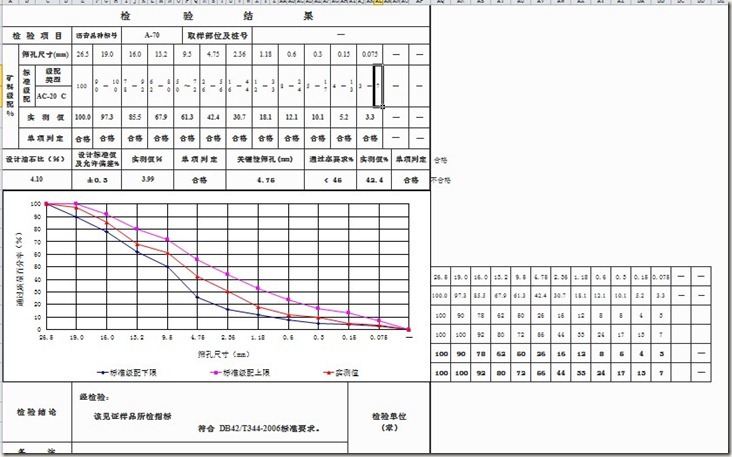POI中HSSF和XSSF操作Excel
在公司实习快一个月了,这段时间公司业务要用JAVA操作复杂的Excel报表.刚开始的Excel还好,没有涉及到复杂的图表,所以使用JXL操作Excel,但是到后来涉及到复杂的图表和单元格公式后JXL就显得无力了.
公司业务需要在原有的Excel模板上填写从数据库读出来的数据,然后保存为新文件让客户下载.最后在业务的每个流程环节上添加签名图片,而且模板复杂所以只有使用Apache的POI来操作Excel.
在刚接触使用POI时,因为Excel模板格式是用的97-2003的板式(后缀名是.xls),所以使用HSSF来操作Excel,我很傻很天真的认为是Apache的幽默把微软的老版Excel称为Horrible SpreadSheet Format,即"讨厌的电子表格格式",后来我才慢慢发现了HSSF操作有多张图表的Excel也很让人郁闷.
首先是HSSF读取Excel
public class ExcelEditor { private HSSFWorkbook book; private String excelRealPath; public ExcelEditor(String excelRealPath)throws IOException{ this.excelRealPath = excelRealPath; FileInputStream fis = new FileInputStream(excelRealPath); book = new HSSFWorkbook(bis); fis.close(); } }
但是有时候在读取的时候会抛出Unable to read entire block;0 bytes read; expected 512 bytes 异常,而且到现在没有发现一个好的解决方案,最后拜托谷老师,找到了一个解决方案:
public class ExcelEditor { private HSSFWorkbook book; private String excelRealPath; public ExcelEditor(String excelRealPath) throws IOException { this.excelRealPath = excelRealPath; FileInputStream fis = new FileInputStream(excelRealPath); ByteArrayInputStream bis = this.converter(fis); book = new HSSFWorkbook(bis); bis.close(); fis.close(); } /** * @param fis 将文件流转换成字节流可以解决问题 * @return * @throws IOException */ private ByteArrayInputStream converter(FileInputStream fis) throws IOException { ByteArrayInputStream byteArrayInputStream = null; byte buf[] = org.apache.commons.io.IOUtils.toByteArray(fis); byteArrayInputStream = new ByteArrayInputStream(buf); return byteArrayInputStream; } } 像这样转一道流解决了抛异常的问题,没有经过长时间测试,我的操作类为: public class ExcelEditor { private HSSFWorkbook book; private String excelRealPath; private Map<Integer,ExcelSheet> sheets = new HashMap<Integer,ExcelSheet>(); public ExcelEditor(String excelRealPath)throws IOException{ this.excelRealPath = excelRealPath; FileInputStream fis = new FileInputStream(excelRealPath); ByteArrayInputStream bis = this.converter(fis); book = new HSSFWorkbook(bis); bis.close(); fis.close(); } /** * @param fis 将文件流转换成字节流可以解决问题 * @return * @throws IOException */ private ByteArrayInputStream converter(FileInputStream fis) throws IOException { ByteArrayInputStream byteArrayInputStream = null; byte buf[] = org.apache.commons.io.IOUtils.toByteArray(fis); byteArrayInputStream = new ByteArrayInputStream(buf); return byteArrayInputStream; } public HSSFWorkbook getHSSFWorkbook(){ return book; } /** * @param index 將Sheet的操作和Workbook分离,在ExcelEditor中用一个Map保存Sheet的引用 * @return */ public ExcelSheet getSheet(int index){ validateSheetIndex(index); ExcelSheet sheet; if(sheets.containsKey(index)){ sheet = sheets.get(index); }else{ sheet = new ExcelSheet(book.getSheetAt(index)); sheets.put(index, sheet); } return sheet; } private void validateSheetIndex(int index) { int lastSheetIx = book.getNumberOfSheets() - 1; if (index < 0 || index > lastSheetIx) { throw new IllegalArgumentException("Sheet index ("+ index +") is out of range (0.." + lastSheetIx + ")"); } } public void writeExcel(String path) throws IOException{ FileOutputStream out = new FileOutputStream(path); book.write(out); out.close(); } public void save() throws IOException{ this.writeExcel(excelRealPath); } }
ExcelEditer提供了基本的读取,保存等操作,而下面的ExcelSheet则提供了对Sheet的操作:
public class ExcelSheet { private HSSFSheet sheet; public ExcelSheet(HSSFSheet sheet) { this.sheet = sheet; } private HSSFCell getCell(int rowNum, int column) { HSSFRow row = sheet.getRow(rowNum); if (row == null) { row = sheet.createRow(rowNum); } HSSFCell c = row.getCell(column); if (c == null) { c = row.createCell(column); } return c; } public void setGraphic(BufferedImage bi, HSSFClientAnchor anchor,boolean resize) throws IOException { // anchor.setAnchorType(HSSFClientAnchor.DONT_MOVE_AND_RESIZE); ByteArrayOutputStream baos = new ByteArrayOutputStream(); ImageIO.write(bi, "jpg", baos); HSSFPatriarch printer = this.sheet.createDrawingPatriarch(); HSSFPicture picture = printer.createPicture(anchor, sheet.getWorkbook().addPicture(baos.toByteArray(), HSSFWorkbook.PICTURE_TYPE_JPEG)); if (resize) { picture.resize(); } baos.close(); } public HSSFCell setString(int rownum, int column, String value) { HSSFCell xcell = this.getCell(rownum, column); xcell.setCellValue(value); return xcell; } public HSSFCell setInt(int rownum, int column, int value) { HSSFCell xcell = this.getCell(rownum, column); xcell.setCellValue(value); return xcell; } public HSSFCell setDouble(int rownum, int column, double value) { HSSFCell xcell = this.getCell(rownum, column); xcell.setCellValue(value); return xcell; } public HSSFCell setBoolean(int rownum, int column, boolean value) { HSSFCell xcell = this.getCell(rownum, column); xcell.setCellValue(value); return xcell; } public HSSFCell setText(int rownum, int column, RichTextString value) { HSSFCell xcell = this.getCell(rownum, column); xcell.setCellValue(value); return xcell; } public HSSFCell setDate(int rownum, int column, Date value) { HSSFCell xcell = this.getCell(rownum, column); xcell.setCellValue(value); return xcell; } public HSSFCell setCalendar(int rownum, int column, Calendar value) { HSSFCell xcell = this.getCell(rownum, column); xcell.setCellValue(value); return xcell; } }
这两个类对付一般的有单元格公式的Sheet没有问题,但是遇到图表麻烦就出现了.项目中有一个模板是这样的:
在向这个模板插入新图片时把原来图表的内容给弄不见了,而且把格式搞得一塌糊涂. 之后发现是createDrawingPatriarch()这个方法的问题,在API中是这样解释的:
Creates the top-level drawing patriarch. This will have the effect of removing any existing drawings on this sheet. This may then be used to add graphics or charts
没办法,调用这个方法会把Chart整个Remove掉,换一种方法调用getDrawingPatriarch(),结果发现一样的效果.
测试了一下午,依然没有发现解决的问题,到这个时候我总算体会到了这SeparateSheetFormat是如此的可怕,Apache的良苦用心啊..
最后只有把目光转向XSSF,XSSF是第二代的Excel格式,也是微软公司支持Open Document Format(开放式文档格式)的一个改版.其后缀名是.xlsx,最后那个X的含义貌似是代表XML吧.有同学不懂Open Document Format的请问谷老师.懂的同学把后缀名改为.zip然后解压出来你就豁然开朗了.
不扯那么远了,最终的两个类为:
public class ExcelEditor { private XSSFWorkbook book; private OPCPackage opc; private String excelRealPath; private Map<Integer,ExcelSheet> sheets = new HashMap<Integer,ExcelSheet>(); /** * 新版的采用OPCPackage作为文件操作类包括.xlsx和.docx都可以用这个类去读取文件 * @param excelRealPath * @throws IOException * @throws InvalidFormatException */ public ExcelEditor(String excelRealPath)throws IOException, InvalidFormatException { this.opc = OPCPackage.open(excelRealPath); this.book = new XSSFWorkbook(opc); this.excelRealPath = excelRealPath; } public XSSFWorkbook getXSSFWorkbook(){ return book; } public ExcelSheet getSheet(int index){ validateSheetIndex(index); ExcelSheet sheet; if(sheets.containsKey(index)){ sheet = sheets.get(index); }else{ sheet = new ExcelSheet(book.getSheetAt(index)); sheets.put(index, sheet); } return sheet; } private void validateSheetIndex(int index) { int lastSheetIx = book.getNumberOfSheets() - 1; if (index < 0 || index > lastSheetIx) { throw new IllegalArgumentException("Sheet index ("+ index +") is out of range (0.." + lastSheetIx + ")"); } } public void writeExcel(String path) throws FileNotFoundException,IOException { File excelFile = new File(path); if(excelFile.exists()){ String extension; String fileName; if(path.lastIndexOf(".")!=-1 && ".xlsx".equalsIgnoreCase(path.substring(path.lastIndexOf(".")))){ extension = path.substring(path.lastIndexOf(".")); fileName = path.substring(0,path.lastIndexOf(".")); }else{ throw new IOException("Xlsx file output only,check your path!!!"); } File tempFile = new File(fileName+"T"+extension); FileOutputStream fos = new FileOutputStream(tempFile); book.write(fos); fos.close(); opc.revert(); excelFile.delete(); tempFile.renameTo(new File(path)); }else{ FileOutputStream fos = new FileOutputStream(excelFile); book.write(fos); fos.close(); } } public void saveExcel() throws IOException{ this.writeExcel(this.excelRealPath); } }
我在XSSFWorkbook中没有找到保存Excel的方法,之后在发现OPCPackage中发现了revert()和close()方法.revert()个是将打开的Excel还原,不保存任何的修改,close()则是保存已经修改的操作.
close()在第二天运行的时候无法正确保存文件,导致close()之后再打开抛出异常,问了谷老师也不知道是什么原因,最后只有把源文件还原revert()然后保存为新文件之后在删掉.
操作XSSFSheet的类为:
public class ExcelSheet{ private XSSFSheet sheet; public ExcelSheet(XSSFSheet sheet){ this.sheet = sheet; } private XSSFCell getCell(int rowNum, int column) { XSSFRow row = sheet.getRow(rowNum); if (row == null) { row = sheet.createRow(rowNum); } XSSFCell c = row.getCell(column); if (c == null) { c = row.createCell(column); } return c; } public void setGraphicByAnchor(BufferedImage bi,XSSFClientAnchor anchor)throws IOException { // anchor.setAnchorType(XSSFClientAnchor.DONT_MOVE_AND_RESIZE); ByteArrayOutputStream baos = new ByteArrayOutputStream(); ImageIO.write(bi,"jpg", baos); XSSFDrawing printer = this.sheet.createDrawingPatriarch(); XSSFPicture picture = printer.createPicture(anchor, sheet.getWorkbook().addPicture(baos.toByteArray(),XSSFWorkbook.PICTURE_TYPE_JPEG)); picture.resize(); baos.close(); } public XSSFCell setString(int rownum, int column, String value) { XSSFCell xcell = this.getCell(rownum, column); xcell.setCellValue(value); return xcell; } public XSSFCell setInt(int rownum, int column, int value) { XSSFCell xcell = this.getCell(rownum, column); xcell.setCellValue(value); return xcell; } public XSSFCell setDouble(int rownum, int column, double value) { XSSFCell xcell = this.getCell(rownum, column); xcell.setCellValue(value); return xcell; } public XSSFCell setBoolean(int rownum, int column, boolean value) { XSSFCell xcell = this.getCell(rownum, column); xcell.setCellValue(value); return xcell; } public XSSFCell setText(int rownum, int column, RichTextString value) { XSSFCell xcell = this.getCell(rownum, column); xcell.setCellValue(value); return xcell; } public XSSFCell setDate(int rownum, int column, Date value) { XSSFCell xcell = this.getCell(rownum, column); xcell.setCellValue(value); return xcell; } public XSSFCell setCalendar(int rownum, int column, Calendar value) { XSSFCell xcell = this.getCell(rownum, column); xcell.setCellValue(value); return xcell; } }
@原文引入:http://www.cnblogs.com/rockcookies/archive/2012/05/15/2502169.html
